NEWS
24.01.2025
Could Pilaf Machines Be Built in Real Life? We Asked a Pilotable Robot Developer All About it!
.jpg?_=1765709340)
Many people dream of piloting a robot. So, it's only natural that tons of different works have portrayed their own takes on these sorts of robots, like the Pilaf Machines from Dragon Ball.
Don't be fooled by their round and cute design; Pilaf Machines are powerful, multifunctional robots said to have been developed by the tiny emperor himself! They are not only equipped with a flamethrower and missiles, but they can also combine to create the Combined Pilaf Machine!
Seemingly in an attempt to catch up to Pilaf, Japan has recently seen rapid development in pilotable robots. One notable example is the ARCHAX, announced by Tsubame Industries in 2023.
.jpg?_=1765709340)
The striking 4.5-meter-tall, 3.5-metric-ton robot can be controlled with joysticks and pedals and is even capable of transforming into a four-wheeled "vehicle mode". It's like seeing a mecha anime brought to life! The price, you ask? A staggering 400 million yen!
In this interview, we'll be discussing the specs behind the Pilaf Machines with the CEO of the company that developed ARCHAX. We'll be digging deep into the series, referencing the scene where the Pilaf Machines appear, as well as getting into the feasibility of a "combining robot".
.jpg?_=1765709340)
Ryo Yoshida: CEO of Tsubame Industries Co., Ltd. Born in 1998, from Kanagawa Prefecture. Influenced by his grandfather who ran an ironworks, he became familiar with machines from a young age and studied robotic hand technology as an undergraduate. He founded ALTs, a company that manufactures myoelectric prosthetic hands in 2019, while still a student. He decided to pursue his long-standing dream of creating a giant robot while also working as a developer. He founded Tsubame Industries in August 2021.
—Mr. Yoshida, as someone with experience developing pilotable robots, I'd like to ask you what you think about the Pilaf Machine's appearance and functionality.
Ryo Yoshida (hereafter Yoshida): My initial impression was I thought that the legs look really thin. If the legs are supporting a body equipped with weapons such as missiles and flamethrowers, the material used on the exterior must be extremely thin and lightweight. However, when it's blown back by some kind of attack, the body itself doesn't sustain any damage, which means that the material must also be very durable.

A Pilaf Machine with its distinctive thin legs.
I doubt that there's a material this lightweight and durable that exists on Earth as of now. I think that the Pilaf Machine must be made with some material we don't even know about.

The Pilaf Machine doesn't break even after a kick from Goku.
—That makes sense. If it isn't light, then there would be no way for those thin legs to support that body.
Yoshida: The difficulties of building a robot lie precisely in how to manage its weight. When the height is doubled, the cross-sectional area increases fourfold, and the volume by eightfold, so the weight increases proportionally. Since the ARCHAX weighs 3.5 metric tons, supporting this much weight on just two legs would put an incredible strain on them. Additionally, since we prioritize the pilot's safety above all else, we have to ensure it doesn't topple over. A 4.5-meter-tall ARCHAX falling over would be just as dangerous as a heavy truck overturning.
—How about its design? The ARCHAX has a very sharp and angular design when compared to the rounded shape of Pilaf Machines.
Yoshida: A design method called topology optimization has recently emerged. It's a computer-based mathematical method that automatically calculates the way material should be arranged to create the most optimized structure. Using this method, it's possible to produce a rounded off, streamlined design such as this.
.jpg?_=1765709340)
A design created using topology optimization.
—The surface looks more rounded, unlike typical robots.
Yoshida: With this design, it ensures proper durability as well. Most machines nowadays, including robots, are designed with angular and flat surfaces in mind. This is due to the technical and material constraints making creating curves difficult. But this type of design often results in unnecessary weight and excessive durability. On the other hand, AI-optimized designs eliminate those unnecessary and excessive aspects. You could say the design is one closer to that of a living organism.
—The roundedness of the Pilaf Machines do seem almost organic. When you think about it, the bodies of living things tend to be designed in a very logical way.
Yoshida: Exactly. The design of Pilaf Machines may be the result of thorough optimization.
Speaking of living organisms, one thing that caught my eye with the Pilaf Machines was their fields of vision. Humans, while walking, unconsciously check their surroundings for safety. This is one reason that looking at your phone while walking increases the likelihood of tripping. You'd understand right away while riding the ARCHAX, as you'll start getting anxious, thinking "Is there something behind me? Below me?" That's why ensuring a proper field of vision is crucial in the development of these types of pilotable robots. However, at a glance, it seems that the Pilaf Machines' fields of vision rely solely on the front window, without the aid of any external cameras. I'm curious as to how it ensures rear visibility.
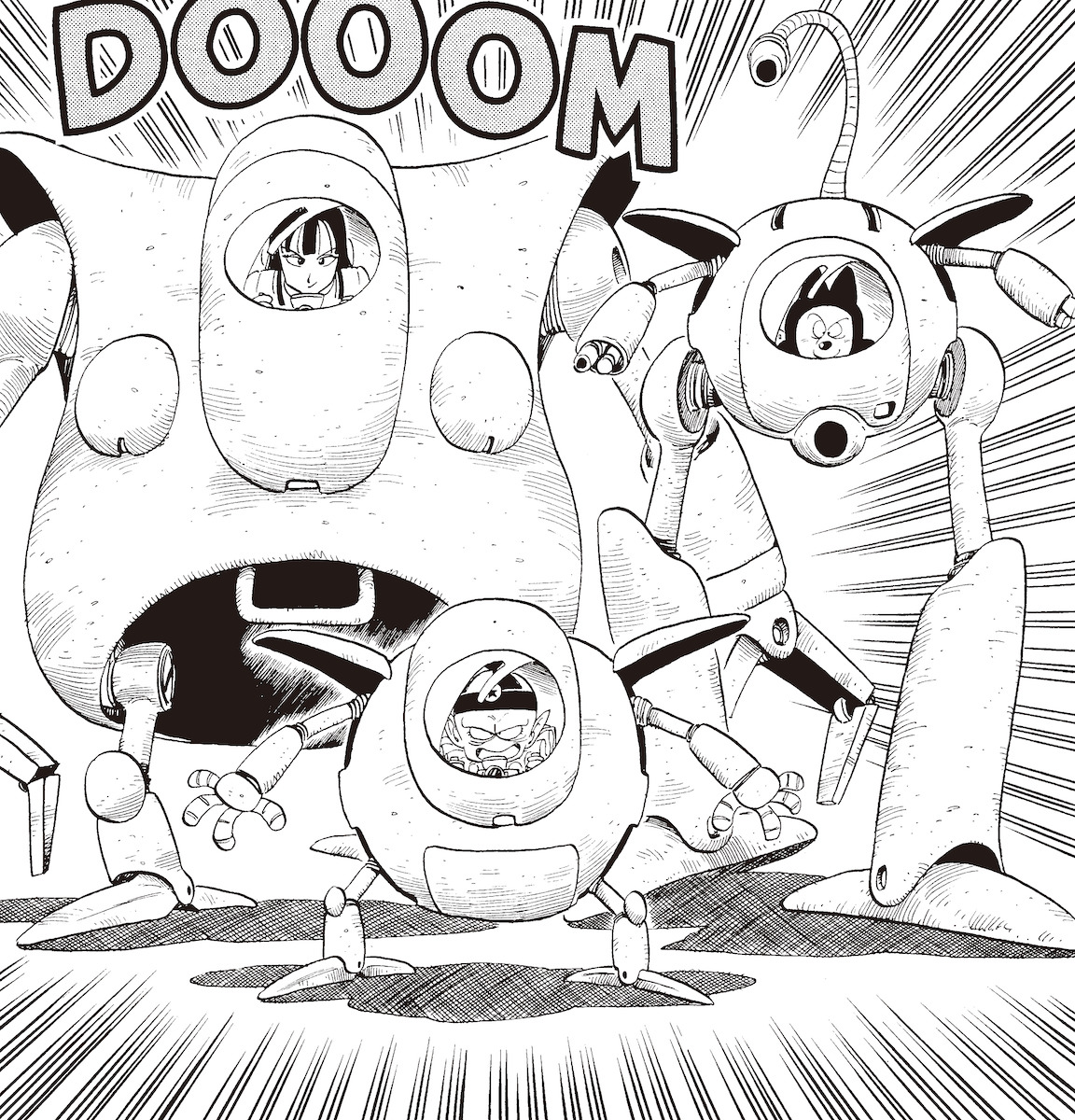
The ARCHAX, by the way, is equipped with nine external cameras.
—I see. It would be essential to ensure a proper field of vision to smoothly operate a robot, right? Also, I noticed the Pilaf Machines are lever-operated, but is this a feature shared with the ARCHAX?

Pilaf Machines appear to be lever-operated.
Yoshida: The Pilaf Machines do seem to be operated via levers, however doing complex movements solely by lever is extremely difficult. Generally, levers are able to control two properties: "position" and "speed". Finer movements would require more precise control over the pressure and angle of the lever. It would be difficult to replicate human-like motions such as grabbing using lever operations.
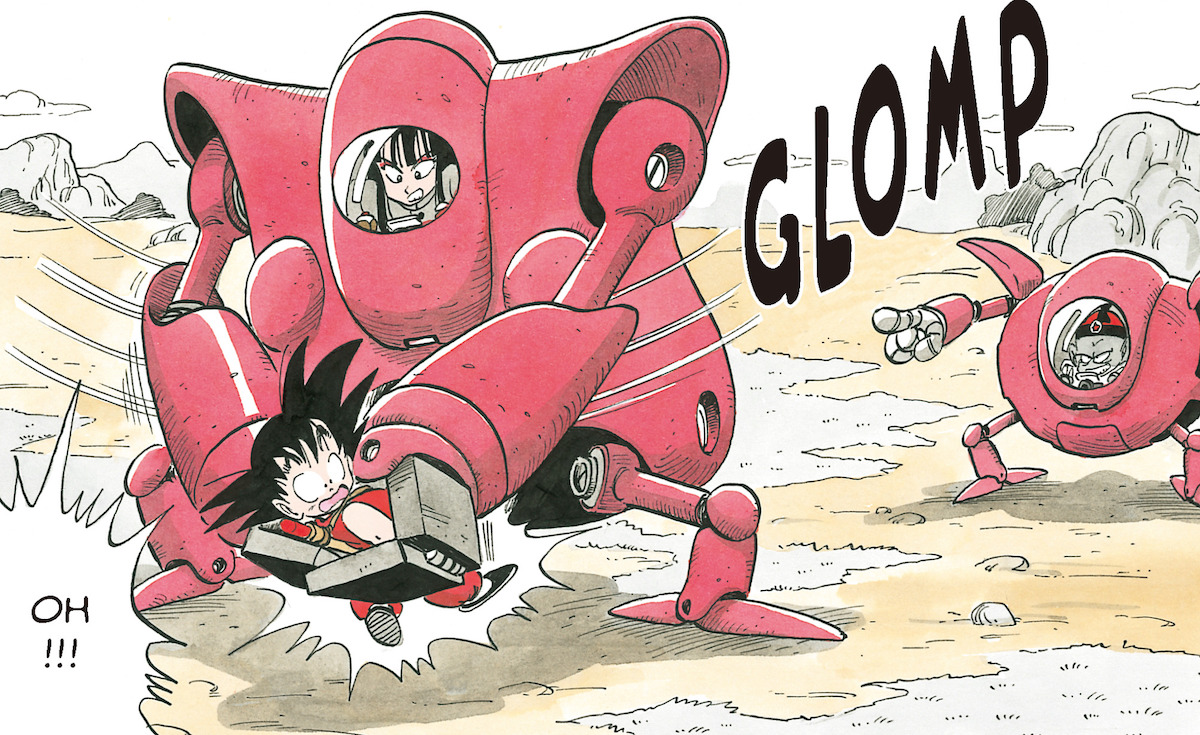
—The machine Pilaf is riding can point with its index finger, suggesting it's capable of fairly precise movements.
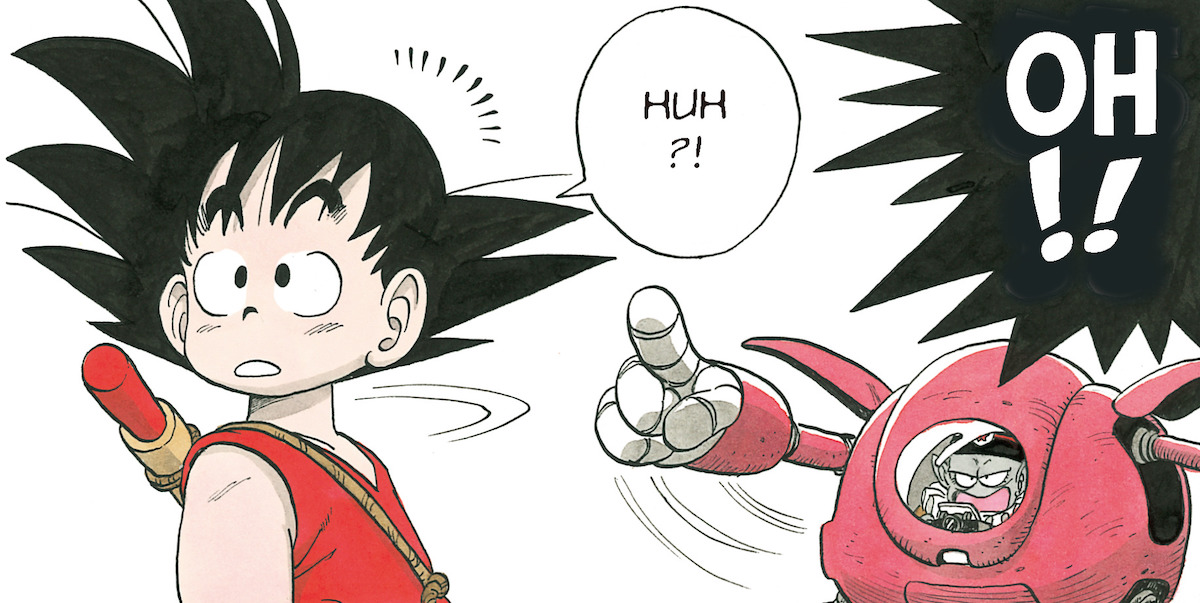
Yoshida: The ARCHAX also has five fingers, allowing it to perform different actions like making a peace sign or other preset poses by button operation.
.jpg?_=1765709340)
Once you get used to controlling the ARCHAX, you can move your fingers more precisely.
However, unlike humans, it's not capable of creating limitless patterns. In that regard, the Pilaf machines exhibit movements quite similar to humans, such as when it opens its hand when surprised. It's possible the machine employs future technology, like some sort of neural connection (editor's note: a system that links the pilot's brain to the robot, allowing it to be controlled via brainwaves), enabling movements closely resembling human intent.
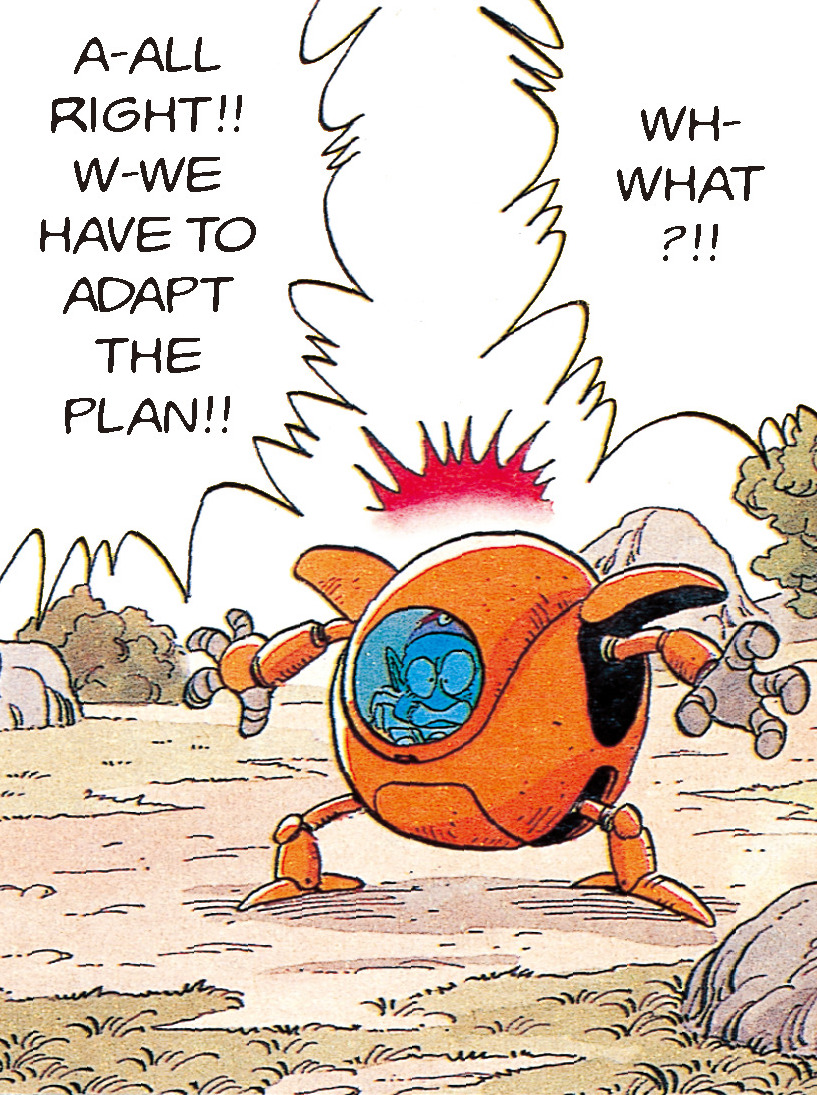
—All three of the Pilaf Machines are capable of combining with each other, creating the Combined Pilaf Machine. Was there anything that struck you about this ability?
Yoshida: As a robot designer I couldn't help but wonder, if there are three pilots, how are the controls divvied up? For example, with passenger planes that have multiple operators, there is a clearly defined system for telling the captain and the co-pilot what they are in charge of at what time. Once the Pilaf Machines have joined together, Emperor Pilaf's machine becomes the head, so perhaps Pilaf is in charge of the controls, but the other two may also have a limited degree of control.
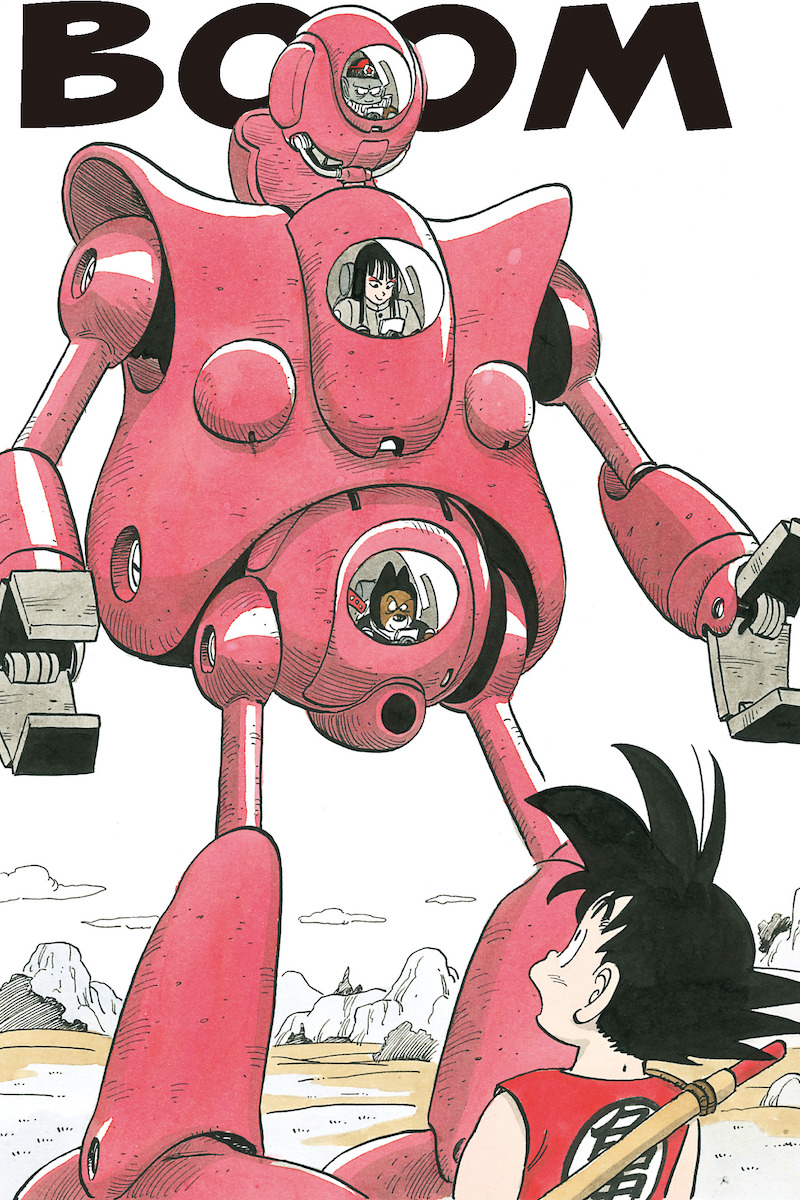
Is Emperor Pilaf in charge of the Combined Pilaf Machine's controls?
—Do you think it's like a system where the other two pilots are able to assume control if there is a problem with the robot's head?
Yoshida: That's certainly a possibility; I think that in such a situation control would be transferred automatically to the other pilots. The ARCHAX, for example, can be controlled both by the pilot in the cockpit as well as through a remote-control system. However, control can only be transferred from within the cockpit to prevent someone assuming control of the ARCHAX from outside while there is a pilot still inside.
—The structure of the Combined Pilaf Machine is also something I'm curious about. When they combine, the legs of the large robot in the center fold up inside, so there must be considerable free space within its body. But would this leave room for a power source in there?

Yoshida: It's possible that in the world of Dragon Ball there has been significant advancement in the miniaturization of energy packs and batteries. Even in our own world, we can see batteries for different kinds of devices getting smaller and smaller. But, of course, it's a whole different story when it comes to weaponry. The robot with long legs also uses missiles, and it's a wonder where it keeps all that stuff inside that body.
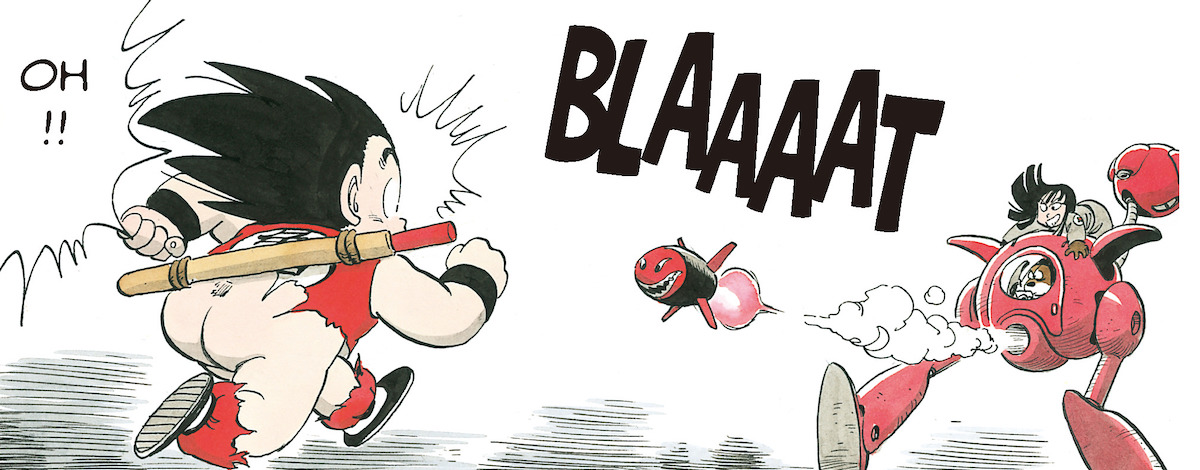
—The long-legged one also has a flamethrower, so it must be storing accelerants such as gunpowder and explosives somewhere.

Yoshida: Yeah, the nozzle of that flamethrower acts as a connector when the robots combine, so it's a vital piece of equipment. It also moves around like a tail or a neck, so I wonder if it's controlled with thoughts through some kind of neural connection...
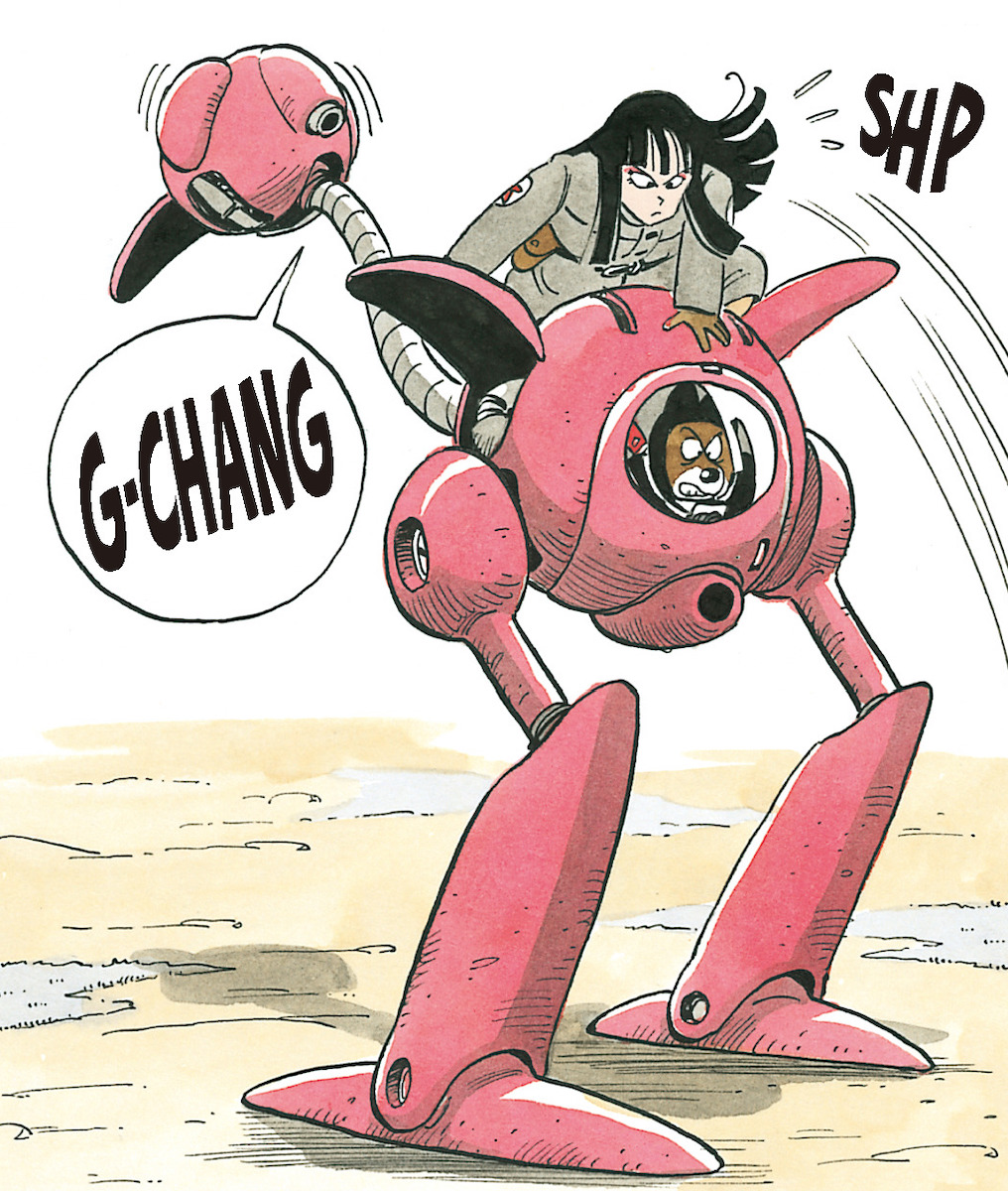
—Are "combining robots" possible with our current technology?
Yoshida: If a robot is going to be able to join together like this, there has to be a reason behind them combining in the first place. The robot will become considerably heavier after combining, and safety features will be harder to implement. Although, we then come back to whether or not it's necessary for people to be riding inside robots in the first place...(laughs).
—Necessity aside, you're ultimately making the ARCHAX because you want to ride inside of a robot, right?
Yoshida: Oh, for sure. And I imagine Emperor Pilaf had a similar desire to pilot a robot himself. I mean, the world of Dragon Ball is filled with advanced technology, so there must be plenty of unmanned robotic weapons he could choose from. There's no logical reason to get inside a weaponized robot and pilot it when you consider the risk of injury or death. So, Pilaf definitely loves robots (laughs). I think I'd get along with him. I'd love to pick his brain and ask what operating system he uses or discuss concept designs with him.
.jpg?_=1765709340)
Yoshida thinks he would get along with Pilaf.
—So you think Pilaf dreamt of piloting a robot, the way a lot of humans do?
Yoshida: I think so. Nowadays, even a lot of construction equipment like excavators can be controlled remotely, and VR and AI technology will only continue to improve. I think we're approaching an age where anything humans do could be done by robots. And once this happens, it will call into question the idea of human identity, and people might look upon the simple joy to be had in riding and piloting a machine yourself with renewed interest.
—Yes, there may be value placed on things that aren't exactly rational. Combining robots is just so cool, and the way Pilaf went ahead and designed his own robot, which he also pilots, does seem like a way people might respond against AI automation in the future.
Yoshida: Yes, I think so. For example, I drive a manual car, even though I know that it's basically pointless now that automatics are the norm. I just love the tactile feedback of shifting the gears myself.
.jpg?_=1765709340)
—Not surprising to hear that from someone making their own pilotable robot (laughs).
—What was your original reason for wanting to make a pilotable robot?
Yoshida: My reasoning was simple: I thought it would be fun! At another company I founded (ALTs), I was designing prosthetic arms that could be controlled with subtle muscle movements. Plus, I've always loved robots, and it might all be because of media like Dragon Ball!
Currently I'm in the process of planning a robot theme park, with the goal of opening in 2027. At this theme park, I want visitors to be able to ride robots, take part in disaster rescue simulations, and play sports-like games. I think much of the world identifies robots with Japanese culture, so I'd like the park to promote this side of Japanese culture as well. What we're shooting for is not science fiction but "science reality", bringing the imaginary to the real world.
—We'd love to see combining robots like the Pilaf Machine!
Yoshida: So long as we can get safety clearance on it (laughs).
Interviewer/Writer: Hotaka Sugimoto
Photography: Kayo Sekiguchi
This site includes machine-translated texts. Please be aware that you might find some unusual expressions that are difficult to understand.
Post
Confirm Post
Post the above comment?
Reply
Confirm Reply
Post the above comment?
Are you sure you want to delete this comment?
Report successful
Post Unsuccessful
This user will be muted.
You will be unable to see comments from muted users in the comments area.
*To unmute users, navigate to the "Comments" area on MY PAGE.
Reply
Confirm Reply
Post the above comment?
Edit
Post


Post
Confirm Post
Post the above comment?
Edit
Post